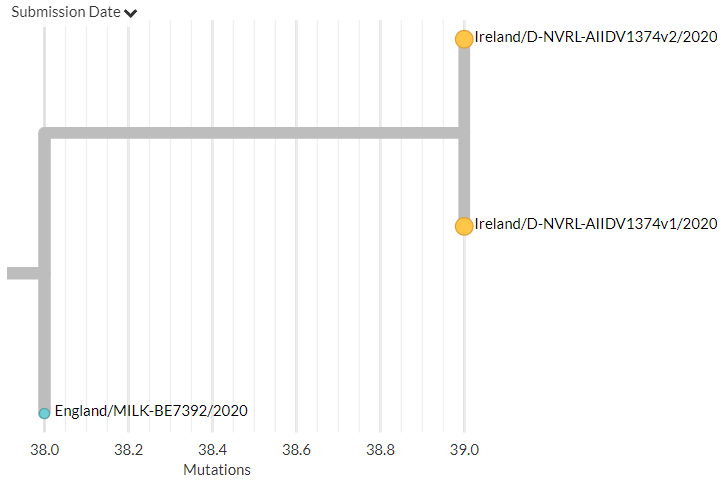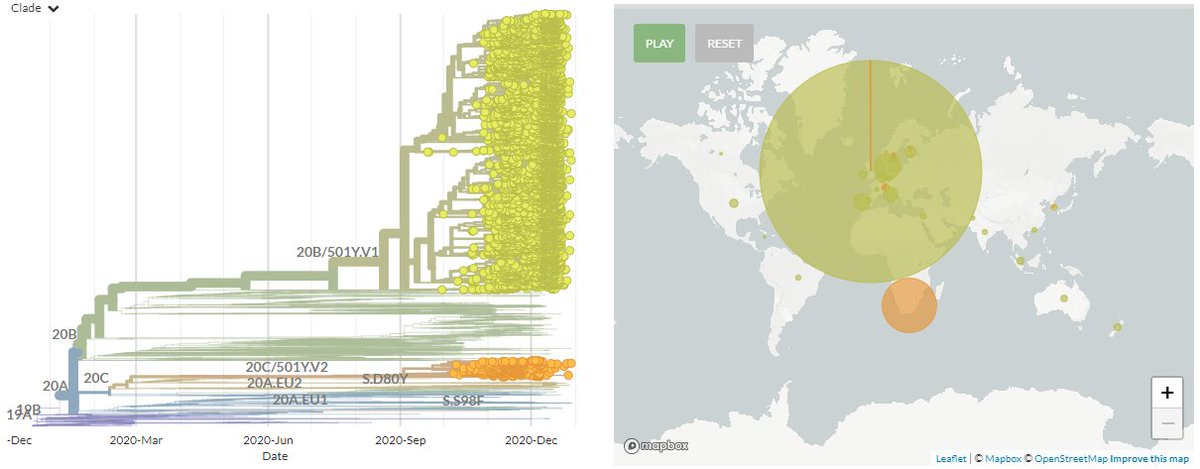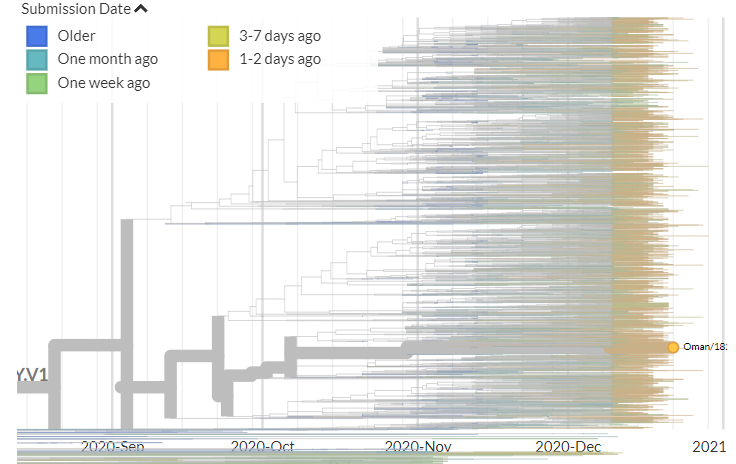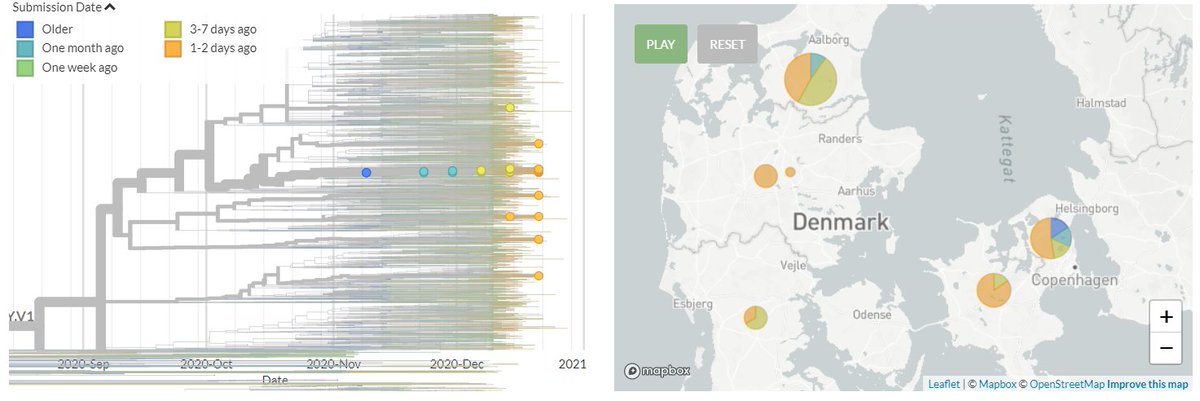
I'm getting some questions about this, so here you go: We do not have sequence evidence of a new, more transmissible "US variant" - it seems to be a misinterpretation.
Still, more sequencing in the US (& globally) will help us better track existing & emerging #SARSCoV2 variants!
Still, more sequencing in the US (& globally) will help us better track existing & emerging #SARSCoV2 variants!
https://twitter.com/carlzimmer/status/1347691930436644870
Importantly: you can have spikes & rises in #SARSCoV2 infections without needing a new variant. We can see this clearly in Europe in autumn: we have a good idea of the variants circulating & no new (or old) variant is responsible. It was likely weather-related.
Similarly, season & holiday related changes in travel & behaviour, changing restrictions/mandates, school & university terms, & 'restriction fatigue' - just to name a few - can play a role in #SARSCoV2 case numbers. We can't & shouldn't blame every rise on a new variant.
Politically this can appear an 'easy answer' as a new, more transmissible variant is 'nobody's fault'. But #SARSCoV2 needs *us* to transmit: our behaviour is one of the largest determinants of how much it can spread. We must own that, & do what we can to lower cases!
• • •
Missing some Tweet in this thread? You can try to
force a refresh






















